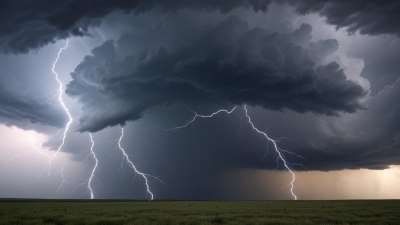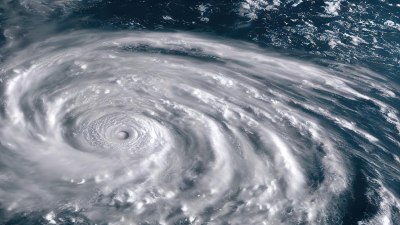Why Winter Feels Colder When It Shouldn’t: The Wind Chill Mystery
Explore the science behind why winter feels colder with wind chill and its impact on our daily lives.

Winter has a unique way of transforming our world into a frosty wonderland, but along with its beauty, it brings cold temperatures that can feel even more frigid when the wind blows. This phenomenon, known as wind chill, often leaves many of us wondering why the temperature can feel so much colder than it actually is. Understanding the science of wind chill and its underlying principles can help us appreciate the complexities of winter weather.
The Basics of Wind Chill
To comprehend why winter feels colder due to wind chill, we must first define what wind chill is. Wind chill is a term used to describe the perceived decrease in air temperature felt by the body due to the flow of air. When the wind blows, it removes the thin layer of warm air that surrounds our skin, leading to a greater heat loss and increased sensation of cold. The wind chill factor is depicted in a wind chill chart that combines the effects of wind speed and actual air temperature to provide a more accurate measure of how cold it feels.
The Science Behind Wind Chill
The wind chill effect is rooted in the principles of convection and heat loss. When we are exposed to cold air, our bodies attempt to maintain a stable internal temperature. A layer of insulating air, which our body generates, usually serves this purpose. However, when the wind blows, it disrupts this insulating layer, allowing cold air to come into contact with our skin. The faster the wind speed, the more rapidly heat is lost from our bodies, resulting in a lower wind chill temperature. This is why even a moderately cold day can feel unbearable with high winds.
The Role of Humidity
Another factor that plays a significant role in how cold winter feels is humidity. While we often associate high humidity with heat, it can also affect our perception of cold air. When humidity levels are high in winter, moisture in the air makes it feel colder than the actual temperature. The moisture on the skin can enhance the cooling effect of wind, as wet skin loses heat more rapidly than dry skin. This phenomenon can lead to conditions like frostbite occurring more quickly than when the air is dry.
Biological Factors
Our bodies react to cold in various ways that can further accentuate the sensation of cold during winter. The average human has a baseline tolerance for cold, but external factors can heighten this sense. For example, if a person is wearing wet clothes or has wet hair, they may feel colder due to rapid heat loss. Moreover, factors such as age, body composition, and even individual metabolic rates can influence how cold we feel. Older adults may be more sensitive to cold due to thinner skin and reduced circulation, while younger individuals may have higher levels of body fat, providing better insulation against cold temperatures.
Winter and Our Environment
Urban environments can experience variations in wind chill due to buildings, trees, and other structures that create wind flows, known as wind tunnels. In cities, wind can be funneled between tall structures, increasing its speed and, consequently, intensifying the perceived cold. Conversely, in open areas, wind can be less intense, leading to a more manageable winter experience. Therefore, the microclimates created by urban settings can significantly change how winter feels based on our location.
The Impact of Wind Chill on Activities
The sensation of cold can significantly influence outdoor winter activities. Activities such as skiing, snowboarding, and ice skating become more hazardous when wind chill is factored in, as it increases the risk of frostbite and hypothermia. Ski resorts often post wind chill warnings, advising skiers and snowboarders on the potential dangers posed by extreme chill factors. Safety gear, appropriate clothing layers, and education about recognizing the signs of frostbite can be crucial for enjoying winter sports safely.
Wind Chill vs. Actual Temperature
People often confuse wind chill with actual temperature, leading to misunderstandings about the weather. For example, on a day when the temperature is 30°F with a wind chill making it feel like 15°F, it’s critical to dress appropriately for the feeling of 15°F, even though the actual temperature is higher. Weather forecasts communicate both the temperature and the wind chill to ensure people are prepared for the conditions. Understanding this differentiation helps people make informed choices regarding attire and outdoor plans.
Protecting Yourself Against Wind Chill
To combat the cold winter air and wind chill, it is essential to dress in layers. Layering provides insulation while allowing moisture to escape, which can help maintain warmth. Base layers made of materials such as merino wool or synthetic fibers wick moisture away from the skin, while middle layers provide insulation. The outer layer serves as a windbreaker to protect against gusts. Additionally, wearing hats, gloves, and scarves can significantly reduce heat loss, as most body heat escapes through the head and extremities.
Understanding Wind Chill Meters
In an effort to better understand wind chill, meteorologists have developed wind chill meters that calculate wind chill based on specific temperatures and wind speeds. These mathematical formulas derive from the principle that the energy lost from the body depends on both the air temperature and the velocity of the wind. People can use these tools to plan accordingly during the winter months, as feeling colder than the actual temperature can create potential dangers.
The Psychological Aspect of Cold
Research has explored the psychological implications of cold weather. The way we perceive and respond to cold can differ based on personal experiences and cultural backgrounds. For instance, individuals raised in colder climates may become more accustomed to the cold, while those from warmer regions may find winter particularly challenging. Furthermore, practical measures like engaging in winter activities and maintaining physical fitness can foster a more positive attitude towards the cold months. Mental preparation can sometimes enhance our ability to handle the winter chill better.
Wind chill presents a fascinating and complex aspect of winter weather that affects us all. As we explore the reasons winter feels colder, it becomes clear that factors like wind speed, humidity, biological differences, and urban environments play critical roles in how we experience the cold. Understanding wind chill can help us prepare better for winter conditions, ensuring a safer and more enjoyable season. Armed with this knowledge, we can step into winter with confidence, ready to embrace the chill while taking appropriate precautions against the cold.











